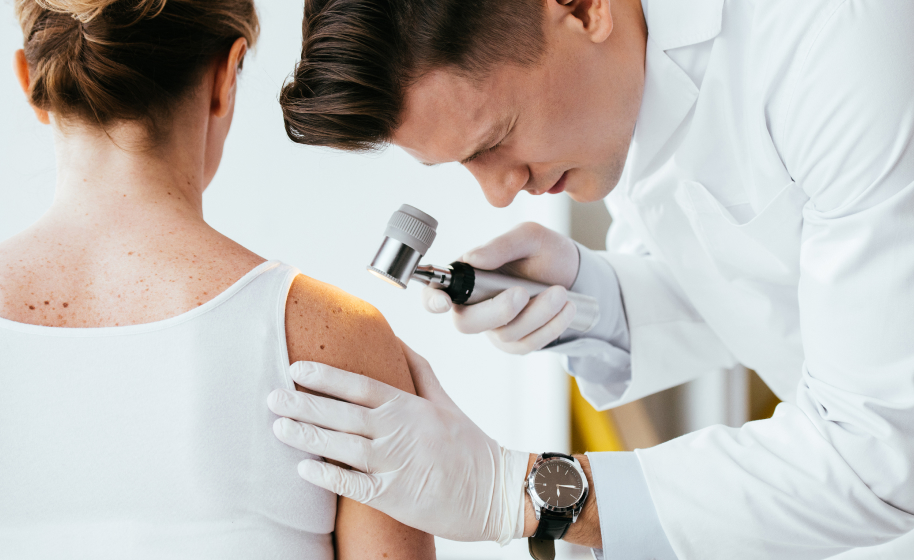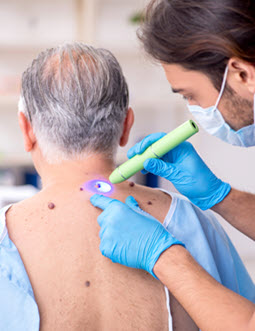Mohs Surgery Explained: A Secret Procedure in Dermatology for Handling Skin Cancer Cells Efficiently
In the realm of dermatology, Mohs surgical treatment stands as an essential procedure for combating skin cancer, particularly basal cell and squamous cell cancer. What exactly makes Mohs surgical treatment so effective and exactly how does it add to positive individual end results?
Comprehending the Basics of Mohs Surgical Treatment
Although it could sound facility, Mohs surgery is a specific surgical method made use of predominantly to treat skin cancer cells. Called after Dr. Frederic E. Mohs, that developed the procedure, it gives the greatest remedy price for sure kinds of skin cancers, consisting of basal cell carcinoma and squamous cell cancer. The key goal of Mohs surgical treatment is to eliminate all cancer cells while sparing as much healthy and balanced cells as possible. It serves as a recommended alternative for cancers located in cosmetically delicate or functionally essential locations like the face, hands, feet, and genitals. Its accuracy and high success price have made Mohs surgery a keystone in dermatology, using wish to patients worldwide. It is very important to note, however, that this treatment is usually reserved for details types of skin cancer.

The Treatment: Step-by-Step Breakdown of Mohs Surgical Treatment
While Mohs surgical procedure might seem difficult, recognizing the detailed treatment can help demystify the process. The procedure begins with the cosmetic surgeon eliminating a slim layer of noticeable malignant skin. This layer is after that meticulously examined under a microscope for cancer cells. If cancer cells are spotted, the specialist gets rid of an additional layer of skin and the procedure is duplicated. This cycle proceeds until say goodbye to cancer cells are found, ensuring the full elimination of cancer cells while maintaining as much healthy and balanced skin as feasible. The wound is after that shut utilizing stitches, a skin graft, or it may be left to recover More Bonuses normally. Postoperative care is necessary to advertise recovery and screen for any signs of reoccurrence.
The Advantages of Mohs Surgical Procedure in Skin Cancer Therapy
An excellent number of individuals have found the distinct benefits of Mohs surgery in their fight versus skin cancer cells. The treatment is normally done on an outpatient basis under regional anesthesia, making it less taxing on the body than even more intrusive surgical treatments. mohs surgery. Mohs surgical treatment provides an exceptional option for reliable see skin cancer cells treatment.
Possible Dangers and Complications Connected With Mohs Surgical Treatment
Regardless of its various benefits, Mohs surgical procedure is not without potential dangers and difficulties. In rare situations, people may experience nerve damage, leading to tingling or weak point in the area of surgery. The emotional influence of a skin cancer cells diagnosis and subsequent surgical go to my site treatment need to not be underestimated, as it can lead to anxiety and anxiety in some individuals.
Preparing for and Recuperating From Mohs Surgical Procedure: What to Anticipate
To ensure the best feasible end result from Mohs surgical procedure, patients need to appropriately prepare for the procedure and understand what to anticipate throughout recovery. Preparation normally involves an in-depth conversation with the medical care company concerning the individual's clinical background, present medicines, and possible allergic reactions. Some medicines may need to be stopped before the surgery to reduce bleeding. Postoperative treatment is crucial for effective recovery. People might experience light discomfort, inflammation, or swelling, which can be handled with prescribed medicines. They are recommended to relax, prevent difficult activities, and keep the surgical site clean and completely dry. Normal follow-ups are needed to keep track of healing and discover any type of complications early. The trick to healing is clients' adherence to their healthcare provider's guidelines.
Conclusion
